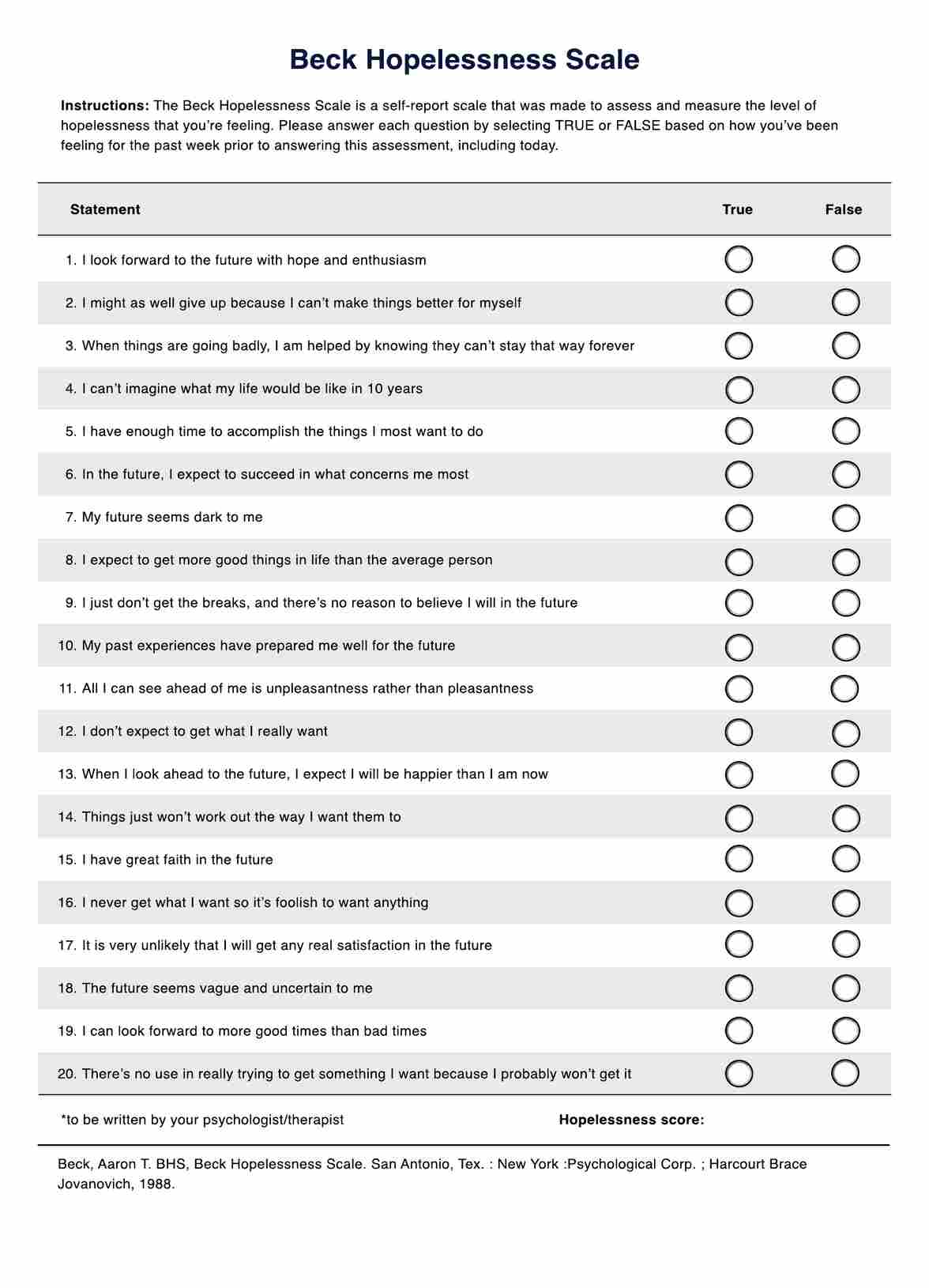As soon as possible. Hopelessness (despair) is an extreme feeling in its own right, so it’s best to issue this to your patient to gauge the level of their feeling of hopelessness. This is so you can come up with a treatment plan as soon as possible.

Beck Hopelessness Scale
Learn how to use the nifty Beck Hopelessness Scale and use it for your practice when gauging your patient’s feeling of hopelessness.
Beck Hopelessness Scale Template
Commonly asked questions
That depends on you and the score designation that the patient’s accomplished scales fall under. If they get a moderate or severe designation, checking up on them every week or two would be great. Just make sure to remember and make it clear that the patient has to rate themselves based on the week prior to answering the scale.
Through the use of score ranges and designations, the Beck Hopelessness Scales gives a semblance of objectivity. These were meant to give you something to work with when assessing the level of your patient’s feeling of hopelessness, as well as to direct how you’re going to go about their treatment plan, like determining what goes into it and what it focuses on.
EHR and practice management software
Get started for free
*No credit card required
Free
$0/usd
Unlimited clients
Telehealth
1GB of storage
Client portal text
Automated billing and online payments











